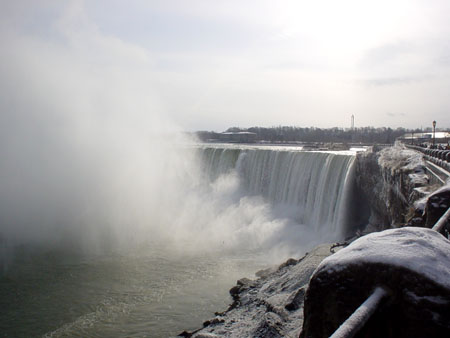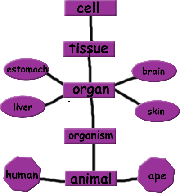Potential energy
This is a form of energy which is waiting to be transformed into another, which usually is kinetic energy (movement). It has the potential to be converted in another form of energy, but it can wait. That where its name comes from.
Example: when you hold a weight in your hand, it has potential energy. More especifically, gravitational potential energy.The higher its position, the more potential energy it possesses. If you drop it, it acquires velocity (kinetic energy) and moves down to the ground, where it has no potential energy (because it can't fall any further). That is a conversion of potential energy into kinetic energy.
Potential energy of water is observed in the image below:

Niagara Falls
The water at the higher level acquires velocity and hits the water below producing a spray. These energy can be harnessed to produce electrical energy, for instance. That is what happens in a hydroelectrical power station.
Another example of potential energy is a compressed spring (elastic potential energy). The energy stored ina stretched or compressed spring was studied by Robert Hooke. It depends on the amount of spring deformation and also on the spring constant k.
In order to illustrate that further, you will be shown a pendulum in movement.This pendulum consists of a weight hanging from a spring.You will be able to drag it and set it up to move in different ways, depending on its position . The more the spring is squeezed , the faster it will move.
You will be able to drag the pendulum using your mouse. When it is released, it will start vibrating...
Go to this external website to check out the movement of the pendulum:
http://www.hk-phy.org/sergey_kisel/java/pend2/index.html
Questions about the pendulum:
1) What two types of potential energy are seen at work in this pendulum animation?
2) This pendulum keeps on the move...Would you expect a real pendulum to stop at some point? Why?



